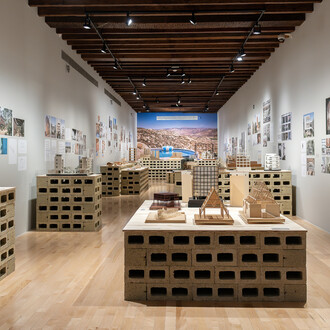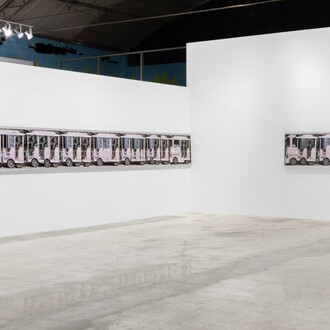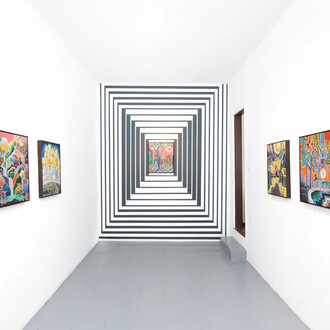Considered as one of the most innovative artists in the use of textiles, which has served her as both a space for meditation and material, Sheila Hicks (Hastings, Nebraska, 1934) has developed during her career, beginning in the mid-1950s, a reflection and a most singular artistic practice.
More than a "textile artist" -a really simplistic term- what this exhibition proposes to discover is a life’s work marked by two essential bases that have served to accompany and nourish it: the influence of Pre-Columbian textile and abstract painting.
Student of Josef Albers at Yale University, Sheila Hicks received a solid pictorial training. It is in this environment, from which two examples are presented here for the first time, in which she carried out her first works and where she developed a special sensitivity to issues related to color and space.
Her practice underwent a radical change when, following the advice of Albers, she made a study trip to Chile in 1957, followed by others along the region where she discovered Latin American textile and became acquainted with the techniques of Andean and Pre-Columbian weave that opened the door to a new field of perception and creation. In order to reaffirm these links, twenty textile pieces from the pre-Columbian collection of the Lima Art Museum are presented here in relation to the artist's work.
Without being a retrospective, this exhibition proposes a vast panorama of Sheila Hicks' work. From one of her first paintings from 1954 to an installation designed for the Museum’s Lobby, proposing a thematic, non-chronological tour that delves into the artist's concerns while highlighting her Latin American roots and influences. Although she lived in Mexico between 1959 and 1964, this is the artist's first exhibition in the country since a collaboration with Antonio Souza Gallery in 1961.
In this way works produced during all the periods, in particular, pieces executed in Mexico at the beginning of 1960’s are exhibited.
Along the tour, great attention has been paid to the search for works that are not among the artist’s best known of and some of which have never been exposed, for at least several decades.












